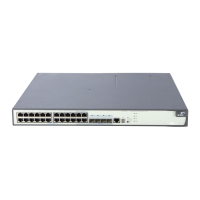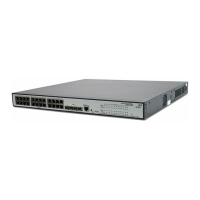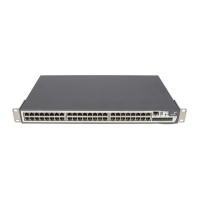1-21
Configuration prerequisites
z The ACL rules used for traffic classification have been defined. Refer to the ACL
module of this manual for information about defining ACL rules.
z The rate limit for traffic policing, and the actions for the packets exceeding the rate limit
have been determined.
z The ports that need this configuration have been determined.
Configuration procedure
Follow these steps to configure traffic policing:
To do… Use the command… Remarks
Enter system view
system-view
—
Enter Ethernet port
view
interface interface-type
interface-number
—
Configure traffic
policing
traffic-limit inbound acl-rule
[ union-effect ] [ egress-port
interface-type
interface-number ] target-rate
[ burst-bucket
burst-bucket-size ] [ exceed
action ]
Required
Specify a committed information
rate (CIR) for the target-rate
argument, and specify a
committed bust size (CBS) for
the burst-bucket-size argument.
By default, traffic policing is
disabled.
The granularity of traffic policing is 64 Kbps. If the number you input is in the range of N*64
to (N+1)*64 (N is a natural number), it will be rounded off to (N+1)*64.
Configuration example
z Ethernet 1/0/1 of the switch is connected to the 10.1.1.0/24 network segment
z Perform traffic policing on the packets from the 10.1.1.0/24 network segment, setting
the rate to 128 kbps
z Mark the DSCP precedence as 56 for the inbound packets exceeding the rate limit.
Configuration procedure:
<Sysname> system-view
[Sysname] acl number 2000
[Sysname-acl-basic-2000] rule permit source 10.1.1.0 0.0.0.255
[Sysname-acl-basic-2000] quit
[Sysname] interface Ethernet1/0/1
[Sysname-Ethernet1/0/1] traffic-limit inbound ip-group 2000 128 exceed
remark-dscp 56

